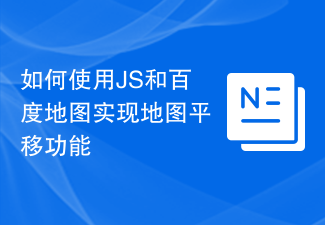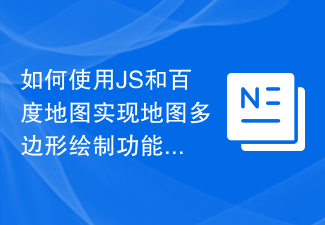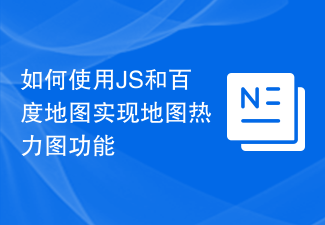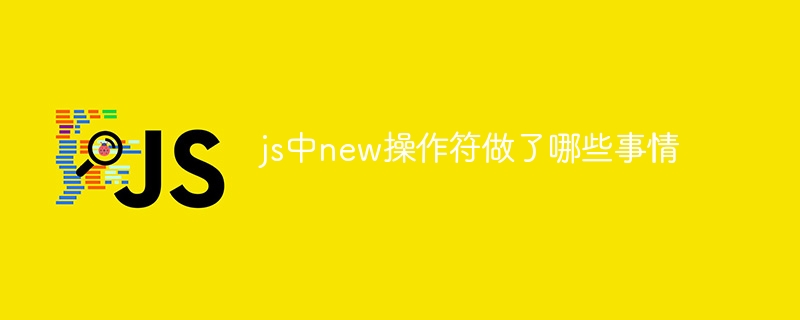(1) Scope
The scope of a variable is the area of the variable defined in the program source code.
1. Lexical scope is used in JS
Variables that are not declared within any function (var is omitted in a function are also considered global) are called global variables (global scope)
Variables declared within a function have function scope and are local variables
Local variables have higher priority than global variables
var name="one";
function test(){
var name="two";
console.log(name); //two
}
test();
Omitting var in the function will affect the global variable, because it has actually been rewritten into a global variable
var name="one";
function test(){
name="two";
}
test();
console.log(name); //two
Function scope, that is to say, function is the basic unit of a scope. js does not have block-level scope like c/c, such as if for, etc.
function test(){
for(var i=0;i If(i==5){
var name = "one";
}
}
console.log(name); //one
}
test(); //Because it is a function-level scope, you can access name="one"
Of course, higher-order functions are also used in js, which can actually be understood as nested functions
function test1(){
var name = "one";
Return function (){
console.log(name);
}
}
test1()();
After test1(), the outer function will be called, and an inner function will be returned. Then continue(), and the inner function will be called and executed accordingly, so "one"
will be output.Nested functions involve closures, which we will talk about later. Here the inner function can access the variable name declared in the outer function, which involves the scope chain mechanism
2. Declaration in JS in advance
The function scope in js means that all variables declared within the function are always visible within the function body. Moreover, the variable can be used before it is declared. This situation is called hoisting
tip: Declaration in advance is performed when the js engine is pre-compiled. The phenomenon of declaration in advance occurs before the code is executed
For example
var name="one";
function test(){
console.log(name); //undefined
var name="two";
console.log(name); //two
}
test();
The above achieves the following effect
var name="one";
function test(){
var name;
console.log(name); //undefined
name="two";
console.log(name); //two
}
test();
Try removing var again? This is the name within the function that has become a global variable, so it is no longer undefined
var name="one";
function test(){
console.log(name); //one
name="two";
console.log(name); //two
}
test();
3. It is worth noting that none of the above mentioned parameters are passed. What if test has parameters?
function test(name){
console.log(name); //one
name="two";
console.log(name); //two
}
var name = "one";
test(name);
console.log(name); // one
As mentioned before, basic types are passed by value, so the name passed into the test is actually just a copy. This copy is cleared after the function returns.
Don’t think that name="two" in the function changes the global name, because they are two independent names
(2) Scope chain
The advanced functions mentioned above involve scope chain
function test1(){
var name = "one";
Return function (){
console.log(name);
}
}
test1()();
1. Introduce a large paragraph to explain:
Each piece of JavaScript code (global code or function) has a scope chain associated with it.
This scope chain is a list or linked list of objects. This group of objects defines the variables "in scope" in this code.
When js needs to find the value of variable x (this process is called variable resolution), it will start from the first object in the chain. If this object has an attribute named x, then The value of this attribute will be used directly. If there is no attribute named x in the first object, js will continue to search for the next object in the chain. If the second object still does not have an attribute named x, it will continue to look for the next one, and so on. If no object in the scope chain contains attribute x, then it is considered that x does not exist in the scope chain of this code, and eventually a ReferenceError exception is thrown.
2. Scope chain example:
In the top-level code of js (that is, the code that does not include any function definition), the scope chain consists of a global object.
In a function body that does not contain nesting, there are two objects on the scope chain. The first is the object that defines function parameters and local variables, and the second is the global object.
In a nested function body, there are at least three objects in the scope.
3. Scope chain creation rules:
When a function is defined (note, it starts when it is defined), it actually saves a scope chain.
When this function is called, it creates a new object to store its parameters or local variables, adds the object to that scope chain, and creates a new, longer representation of the function calling scope. The "chain".
For nested functions, the situation changes again: every time the external function is called, the internal function will be redefined again. Because every time an external function is called, the scope chain is different. Inner functions need to be subtly different each time they are defined - the code of the inner function is the same every time the outer function is called, and the scope chain associated with this code is also different.
(tip: Understand the above three points well and remember it. It is best to say it in your own words, otherwise you will have to memorize it, because the interviewer will ask you directly: Please describe the scope chain... )
A practical example of scope chaining:
var name="one";
function test(){
var name="two";
function test1(){
var name="three";
console.log(name); //three
}
function test2(){
console.log(name); // two
}
test1();
test2();
}
test();
The above is a nested function, correspondingly there should be three objects in the scope chain
Then when calling, you need to find the value of name, just search
When test1() is called successfully, the order is test1()->test()-> global object window. Because the value three of name is found on test1(), the search is completed and returns
When test1() is called successfully, the order is test2()->test()->global object window. Because the value of name is not found on test2(), we look for it in test() and find it. If the value of name is two, the search will be completed and return
Another example is that sometimes we make mistakes and are often cheated during interviews.
ttp://www.w3.org/TR/xhtml1/DTD/xhtml1-transitional.dtd">http://www.w3.org/TR/xhtml1/DTD/xhtml1-transitional.dtd">
http://www.w3.org/1999/xhtml">
为什么?
根据作用域链中变量的寻找规则:
b.addEventListener("click",function(){
alert("Button" i);
},false);
这里有一个函数,它是匿名函数,既然是函数,那就在作用域链上具有一个对象,这个函数里边使用到了变量i,它自然会在作用域上寻找它。
查找顺序是 这个匿名函数 -->外部的函数buttonInit() -->全局对象window
匿名函数中找不到i,自然跑到了buttonInit(), ok,在for中找到了,
这时注册事件已经结束了,不要以为它会一个一个把i放下来,因为函数作用域之内的变量对作用域内是一直可见的,就是说会保持到最后的状态
当匿名函数要使用i的时候,注册事件完了,i已经变成了4,所以都是Button4
那怎么解决呢?
给它传值进去吧,每次循环时,再使用一个匿名函数,把for里边的i传进去,匿名函数的规则如代码
ttp://www.w3.org/TR/xhtml1/DTD/xhtml1-transitional.dtd">http://www.w3.org/TR/xhtml1/DTD/xhtml1-transitional.dtd">
http://www.w3.org/1999/xhtml">
这样就可以 Button1..2..3了
4.上述就是作用域链的基本描述,另外,with语句可用于临时拓展作用域链(不推荐使用with)
语法形如:
with(object)
statement
这个with语句,将object添加到作用域链的头部,然后执行statement,最后把作用域链恢复到原始状态
简单用法:
比如给表单中各个项的值value赋值
一般可以我们直接这样
var f = document.forms[0];
f.name.value = "";
f.age.value = "";
f.email.value = "";
with를 소개한 후 (with를 사용하면 일련의 문제가 발생하므로 위의 형식을 사용하겠습니다)
with(document.forms[0]){
f.name.value = "";
f.age.value = "";
f.email.value = "";
}
또한 객체 o에 x 속성이 있으면 o.x = 1;
그런 다음
(o)와 함께{
x = 2;
}
은 o.x = 2로 변환될 수 있습니다.
o가 속성 x를 정의하지 않으면 해당 기능은 x = 2 전역 변수와 동일합니다.
with는 o의 속성을 읽는 지름길을 제공하지만, o 자체에 없는 속성을 생성할 수는 없기 때문입니다.
이상 내용이 이 글의 전체 내용입니다. 자바스크립트를 배우시는 모든 분들께 도움이 되었으면 좋겠습니다.
 如何使用JS和百度地图实现地图平移功能Nov 21, 2023 am 10:00 AM
如何使用JS和百度地图实现地图平移功能Nov 21, 2023 am 10:00 AM如何使用JS和百度地图实现地图平移功能百度地图是一款广泛使用的地图服务平台,在Web开发中经常用于展示地理信息、定位等功能。本文将介绍如何使用JS和百度地图API实现地图平移功能,并提供具体的代码示例。一、准备工作使用百度地图API前,首先需要在百度地图开放平台(http://lbsyun.baidu.com/)上申请一个开发者账号,并创建一个应用。创建完成
 js字符串转数组Aug 03, 2023 pm 01:34 PM
js字符串转数组Aug 03, 2023 pm 01:34 PMjs字符串转数组的方法:1、使用“split()”方法,可以根据指定的分隔符将字符串分割成数组元素;2、使用“Array.from()”方法,可以将可迭代对象或类数组对象转换成真正的数组;3、使用for循环遍历,将每个字符依次添加到数组中;4、使用“Array.split()”方法,通过调用“Array.prototype.forEach()”将一个字符串拆分成数组的快捷方式。
 如何使用JS和百度地图实现地图多边形绘制功能Nov 21, 2023 am 10:53 AM
如何使用JS和百度地图实现地图多边形绘制功能Nov 21, 2023 am 10:53 AM如何使用JS和百度地图实现地图多边形绘制功能在现代网页开发中,地图应用已经成为常见的功能之一。而地图上绘制多边形,可以帮助我们将特定区域进行标记,方便用户进行查看和分析。本文将介绍如何使用JS和百度地图API实现地图多边形绘制功能,并提供具体的代码示例。首先,我们需要引入百度地图API。可以利用以下代码在HTML文件中导入百度地图API的JavaScript
 如何使用JS和百度地图实现地图热力图功能Nov 21, 2023 am 09:33 AM
如何使用JS和百度地图实现地图热力图功能Nov 21, 2023 am 09:33 AM如何使用JS和百度地图实现地图热力图功能简介:随着互联网和移动设备的迅速发展,地图成为了一种普遍的应用场景。而热力图作为一种可视化的展示方式,能够帮助我们更直观地了解数据的分布情况。本文将介绍如何使用JS和百度地图API来实现地图热力图的功能,并提供具体的代码示例。准备工作:在开始之前,你需要准备以下事项:一个百度开发者账号,并创建一个应用,获取到相应的AP
 js中new操作符做了哪些事情Nov 13, 2023 pm 04:05 PM
js中new操作符做了哪些事情Nov 13, 2023 pm 04:05 PMjs中new操作符做了:1、创建一个空对象,这个新对象将成为函数的实例;2、将新对象的原型链接到构造函数的原型对象,这样新对象就可以访问构造函数原型对象中定义的属性和方法;3、将构造函数的作用域赋给新对象,这样新对象就可以通过this关键字来引用构造函数中的属性和方法;4、执行构造函数中的代码,构造函数中的代码将用于初始化新对象的属性和方法;5、如果构造函数中没有返回等等。
 用JavaScript模拟实现打字小游戏!Aug 07, 2022 am 10:34 AM
用JavaScript模拟实现打字小游戏!Aug 07, 2022 am 10:34 AM这篇文章主要为大家详细介绍了js实现打字小游戏,文中示例代码介绍的非常详细,具有一定的参考价值,感兴趣的小伙伴们可以参考一下。
 php可以读js内部的数组吗Jul 12, 2023 pm 03:41 PM
php可以读js内部的数组吗Jul 12, 2023 pm 03:41 PMphp在特定情况下可以读js内部的数组。其方法是:1、在JavaScript中,创建一个包含需要传递给PHP的数组的变量;2、使用Ajax技术将该数组发送给PHP脚本。可以使用原生的JavaScript代码或者使用基于Ajax的JavaScript库如jQuery等;3、在PHP脚本中,接收传递过来的数组数据,并进行相应的处理即可。
 js是什么编程语言?May 05, 2019 am 10:22 AM
js是什么编程语言?May 05, 2019 am 10:22 AMjs全称JavaScript,是一种具有函数优先的轻量级,直译式、解释型或即时编译型的高级编程语言,是一种属于网络的高级脚本语言;JavaScript基于原型编程、多范式的动态脚本语言,并且支持面向对象、命令式和声明式,如函数式编程。


Hot AI Tools

Undresser.AI Undress
AI-powered app for creating realistic nude photos

AI Clothes Remover
Online AI tool for removing clothes from photos.

Undress AI Tool
Undress images for free

Clothoff.io
AI clothes remover

AI Hentai Generator
Generate AI Hentai for free.

Hot Article

Hot Tools

Dreamweaver Mac version
Visual web development tools

MinGW - Minimalist GNU for Windows
This project is in the process of being migrated to osdn.net/projects/mingw, you can continue to follow us there. MinGW: A native Windows port of the GNU Compiler Collection (GCC), freely distributable import libraries and header files for building native Windows applications; includes extensions to the MSVC runtime to support C99 functionality. All MinGW software can run on 64-bit Windows platforms.

MantisBT
Mantis is an easy-to-deploy web-based defect tracking tool designed to aid in product defect tracking. It requires PHP, MySQL and a web server. Check out our demo and hosting services.

Atom editor mac version download
The most popular open source editor

Notepad++7.3.1
Easy-to-use and free code editor






